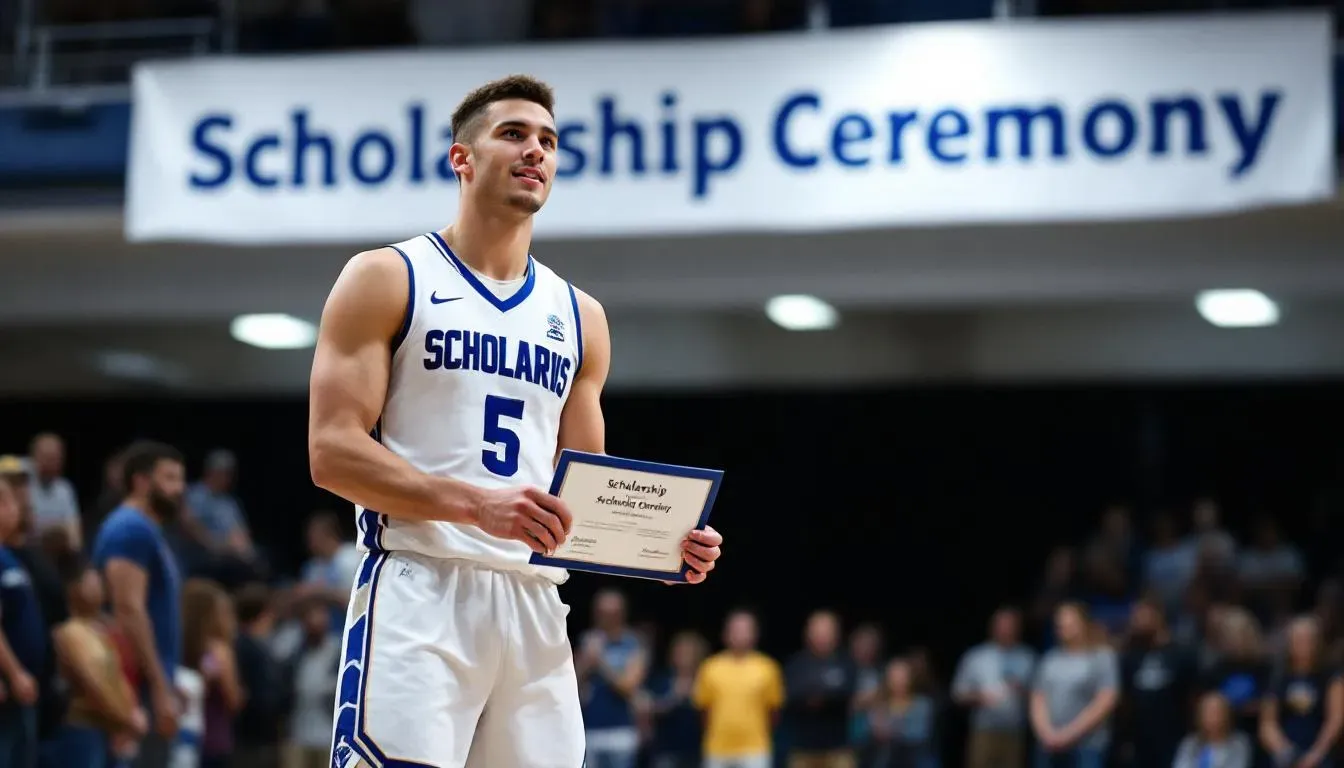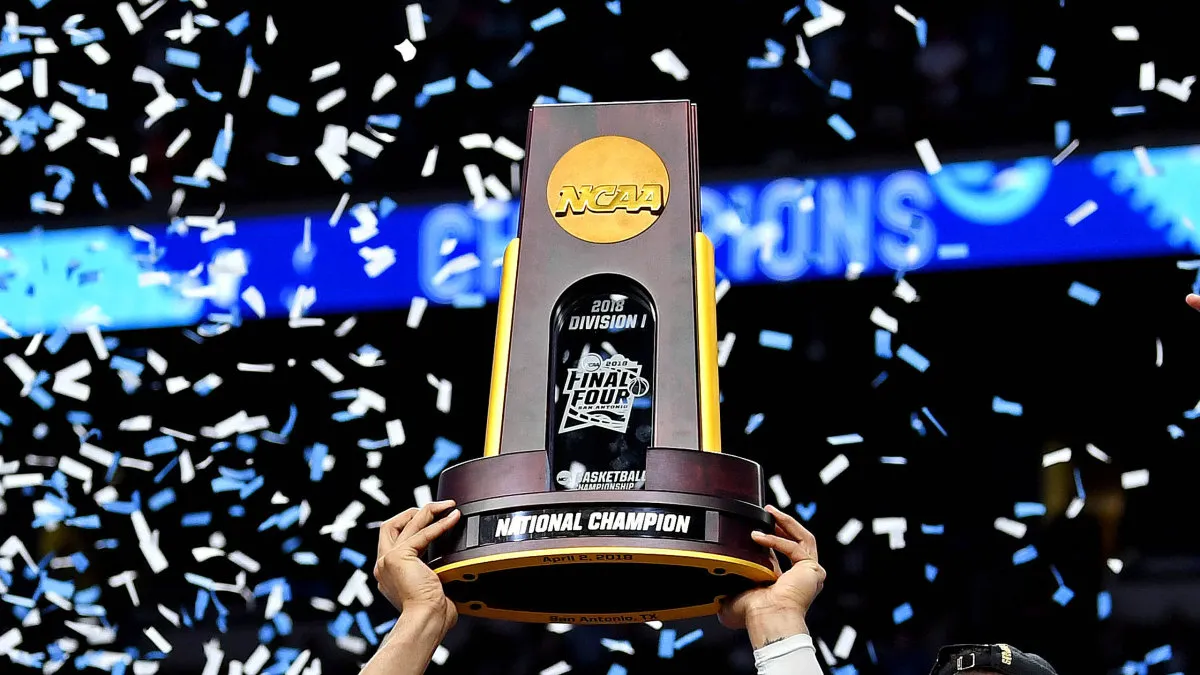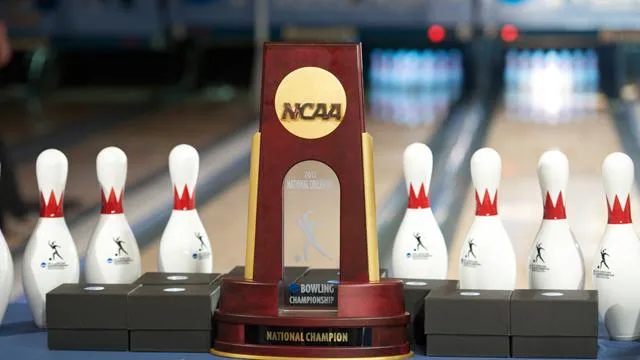Crossing the Finish Line: How to Commit to a College

Maria Rezhylo
All-American swimmer & swim coach
Your locker is plastered with acceptance letters, your phone buzzes with texts from coaches, and somewhere in the back of your mind, you're already picturing yourself in the colors of your dream school.
The excitement is intoxicating—you can almost taste the independence, feel the adrenaline of competing at the next level, and imagine the pride on your parents' faces when you officially commit to a college.
But as any seasoned athlete knows, the most crucial moments often come right before crossing that finish line. The decisions you make in these final months will shape not just your next four years, but potentially your entire future.
Whether you're fielding calls from multiple colleges, comparing financial aid packages, or trying to envision yourself thriving in a completely different campus culture, the weight of this college decision can feel overwhelming.
Let's walk through this process together, step by step, so you can make the most informed decision possible.
Understanding How to Commit to a College: The Foundation of Your Journey
While your non-athlete friends might simply choose between acceptance letters and submit their enrollment deposit, your path involves an intricate dance between athletic recruitment, academic admission, and financial considerations that can make all the difference in your college experience.
🗣️ The Verbal vs. Official Commitment Distinction
The first crucial distinction to grasp is between verbal and formal commitments.
A verbal commitment is exactly what it sounds like—a spoken agreement between you and a coach that carries significant emotional weight but is not legally binding.
Think of it as a gentleman's agreement that signals your intention to attend that school and compete for their program.
However, this verbal pledge leaves room for both parties to change their minds, though doing so should never be taken lightly, given the relationships and recruiting dynamics involved.
On the other hand, an official commitment involves signing a binding agreement that legally obligates you to attend that institution for at least one academic year in exchange for athletic scholarship aid.
At the Division I and II levels, this has traditionally been the National Letter of Intent (NLI), though the NCAA recently eliminated the NLI in 2024, replacing it with grant-in-aid contracts that function similarly.
These documents transform your college decision from a flexible choice into a formal commitment that other programs must respect by ceasing their recruitment efforts.
The Emotional Journey of Commitment
The implications of this distinction extend far beyond paperwork.
When you make a verbal commitment, you're essentially placing a "hold" on your spot while maintaining some flexibility should circumstances change dramatically.
Many current students will tell you that their verbal commitment period was both exciting and nerve-wracking— exciting because they had a clear direction, but nerve-wracking because nothing was truly finalized until they signed their official paperwork and completed the admissions process.
Understanding these nuances becomes particularly important when you're juggling interest from multiple colleges.
Each conversation with a coach, each campus visit, and each financial aid award letter adds another layer to your decision-making process.
The pressure to commit—whether verbally or officially—can be intense, especially when coaches hint that their offer might not remain available indefinitely.
🧠 Developing Your Own Process
This is where having a clear understanding of your own process becomes invaluable, allowing you to navigate these conversations with confidence and clarity.
Create atimeline that accounts for application deadlines, official visit windows, and decision deadlines.
Document your conversations with coaches, including specific details about scholarship offers, academic expectations, and team culture.
This organization will serve you well when you're comparing opportunities and making your final decision.
Many student-athletes find it helpful to create a decision matrix that weighs factors like:
Academic program quality
Coaching philosophy
Scholarship amount
Campus culture
Geographic location
While this might seem overly analytical for such a personal decision, having a structured framework can help you cut through the emotional complexity and focus on what truly matters for your long-term success and happiness.
💵 Navigating Financial Aid and Your School's Offer
The financial aid landscape for student-athletes operates in a unique ecosystem that blends traditional need-based aid, merit scholarships, and athletic scholarships into packages that can vary dramatically between institutions.
Understanding these financial aid packages requires more than just looking at the bottom line—you need to decode what each component means for your actual out-of-pocket expenses and long-term financial health.
🎓 Understanding Athletic Scholarships
Athletic scholarships themselves exist on a spectrum from full rides to partial awards, and the reality is that full scholarships are far rarer than most families initially expect.
When you receive a financial aid award letter, it's crucial to understand that athletic aid can only cover tuition, fees, on-campus room and board, and sometimes books and supplies.
However, lab fees, personal expenses, transportation, and other incidental costs often remain your responsibility.
Many families are surprised to discover that even with a substantial athletic scholarship, they'll still need to budget for several thousand dollars in additional expenses each academic year.
🤝 Working with the Financial Aid Office
This is why the financial aid office becomes such an important resource—they can help you understand exactly what your aid package covers and what gaps remain.
Don't hesitate to schedule appointments with financial aid counselors at each school you're seriously considering.
Come prepared with specific questions about meal plans, housing options, and any additional fees that might not be immediately apparent in your award letter.
The complexity increases when you're comparing offers from multiple colleges.
A smaller athletic scholarship at a prestigious school might actually cost you more out-of-pocket than a larger award at a less expensive institution.
Similarly, some schools excel at combining athletic aid with academic scholarships or need-based grants, creating packages that might be more generous than the athletic component alone would suggest.
📊 Long-term Financial Planning
One aspect that many student-athletes often overlook is the stability of their financial aid over the four-year period.
Athletic scholarships are typically renewed annually, contingent on maintaining academic eligibility and remaining in good standing with the program. Understanding the renewal criteria and having honest conversations with coaches about their expectations can help you avoid unpleasant surprises down the road.
Current students often report that their financial aid conversations during recruitment were overly optimistic, and they wish they had pushed for more specific details about year-to-year consistency.
Ask coaches directly about their track record with scholarship renewals and what circumstances might lead to reductions in aid.
While these conversations can feel uncomfortable, they're essential for making informed decisions about taking on more debt or choosing between different school options.
The timing of financial aid decisions also creates unique pressures.
While most colleges operate on a May 1 deadline for accepting admission, athletic recruitmentoften moves faster, with coaches expecting decisions well before that date.
This compressed timeline means you need to be proactive about understanding your aid packages and shouldn't hesitate to ask for clarification or negotiate when appropriate.
🏫 Discovering Campus Culture Through the Eyes of Current Students
Campus culture represents one of the most influential yet hardest-to-quantify factors in your college decision, and for student-athletes, understanding this culture requires looking beyond the glossy recruitment materials to understand how athletic life integrates with the broader campus experience.
The most authentic insights come from current students who have experienced the transition from high school to college sports and can speak candidly about what daily life really entails.
🧍 Connecting with Current Student-Athletes
During your campus visits, make it a priority to connect with current student-athletes who aren't part of your official recruitment itinerary.
These conversations often reveal the unvarnished truth about balancing academics and athletics, the social dynamics within the team, and how the broader campus community views and supports the athletics program.
Many prospective students focus so intensely on facilities and coaching staff that they miss crucial insights about whether they'll actually enjoy spending the next four years in this environment.
Ask current students about their typical day, from morning training sessions to evening study halls.
Don't be afraid to ask about the challenging aspects of their experience—every program has drawbacks, and understanding these upfront helps you make a more informed decision.
🔍 Understanding Program Culture
The athletic culture within your specific program can vary dramatically from the overall campus culture.
Some programs foster intense, all-consuming environments where athletics dominates every aspect of student life, while others encourage a more balanced approach that emphasizes the "student" part of student-athlete.
Neither approach is inherently better, but understanding which style aligns with your personality and goals becomes crucial for long-term satisfaction.
Consider which approach appeals to you and aligns with your vision of college life.
📚 Academic Integration and Support
Academic culture deserves equal attention, particularly regarding how professors and academic support services work with student-athletes.
Some institutions offer robust academic support programs specifically designed for athletes, including tutoring, study halls, and flexible scheduling to accommodate competitions and travel. Others expect athletes to navigate academic challenges using the same resources available to all students.
Understanding these differences can dramatically affect your stress levels and academic success throughout college.
🍽️ Quality of Life Considerations
The social aspects of campus culture extend far beyond athletics and academics. Consider factors such as campus size, geographic location, diversity, and the availability of activities that interest you beyond your sport.
If religious services are essential to you, research the campus chaplaincy and local community.
If you're interested in specific clubs, internship opportunities, or cultural events, consider how accessible these opportunities are for student-athletes, taking into account your training and competition schedule.
Don't underestimate the importance of fundamental quality-of-life factors. Current students can offer valuable insights into dining options, housing quality, campus safety, and the overall atmosphere of the student body.
These elements might seem minor compared to athletic and academic considerations, but they collectively contribute to whether you'll feel at home on campus or constantly yearn to be somewhere else.
🗓️ College Decision Day Reality
National College Decision Day, traditionally marked on May 1st, marks the culmination of months of deliberation; however, for student-athletes, the timeline often accelerates significantly due to the competitive nature of athletic recruitment.
Understanding the enrollment deposit process and the ethical considerations surrounding commitment to a college becomes crucial for maintaining your integrity while securing your preferred opportunity.
💸 Understanding the Enrollment Deposit
The enrollment deposit, typically ranging from $200 to $500, serves as your formal acceptance of admission and reserves your spot in the incoming class.
This non-refundable deposit represents more than just a financial transaction—it's your commitment to attend that institution.
However,the complexity of athletic recruitmentcan create situations where you're pressured to make enrollment decisions before you've heard from all the schools you're considering.
Coaches might indicate that their scholarship offer has an expiration date, or that they need to know your decision before they can finalize their recruiting class.
This creates a tension between making timely decisions and ensuring you've fully explored all your options.
⏳ The Timeline Pressure
The compressed timeline of athletic recruitment often conflicts with the traditional college decision timeline.
It's essential to communicate clearly with coaches about your timeline and decision-making process.
Most coaches understand that this is a major life decision and will respect your need for enough time to consider all factors.
However, they also have recruiting deadlines to meet, so balancing your needs with their schedule requires open, honest communication.
🖥️ Using the Student Portal Effectively
Your student portal becomes an invaluable resource during this process, providing access to enrollment information, financial aid updates, and important deadlines.
Many students make the mistake of assuming that submitting their enrollment deposit completes the process, but numerous additional steps typically remain, including housing applications, orientation registration, and final transcript submissions.
Stay organized and proactive about these requirements to prevent last-minute scrambling and ensure a smooth transition to college.
Create a checklist of all required tasks and deadlines, and set reminders to complete them well in advance.
This organization will serve you well throughout your college career, where meeting deadlines and managing multiple responsibilities becomes even more critical.
😰 Handling Decision Anxiety
The emotional weight of finalizing your college decision can be substantial, particularly if you've been torn between multiple attractive options.
It's normal to experience some anxiety or second-guessing even after you've made your decision.
Many current students report that they felt uncertain about their choice right up until they arrived on campus, only to discover that their concerns were largely unfounded once they began their college experience.
Remember that some degree of uncertainty is natural and doesn't necessarily indicate that you've made the wrong choice.
Moving to college is a significant milestone, regardless of the destination, and many students experience some nerves about this major life transition.
Focus on the reasons that guided your decision instead of doubting yourself due to typical pre-transition anxiety.
⚠️ Avoiding the Double Depositing Trap
The temptation to hedge your bets by submitting enrollment deposits to multiple colleges often stems from genuine uncertainty about making the right choice.
Still, this approach creates more problems than it solves and can seriously damage your reputation and relationships within the college admissions community.
Instead of pursuing this problematic strategy, focus on developing a clear framework for identifying your good match and making a confident decision.
🚀 Embracing Your Journey: The Next Four Years Begin Now
As you approach the final stages of your college decision process, take a moment to step back and appreciate the remarkable journey that has brought you to this point.
Now, as you prepare to embark on the next four years of your life, you're not just choosing a college—you're selecting the environment where you'll continue to grow, challenge yourself, and discover new aspects of your potential.
Trust in the process that got you here, have confidence in your decision-making abilities, and embrace the excitement of everything that lies ahead.
You've already demonstrated the dedication and resilience required to succeed as a student-athlete, and these qualities will serve you well in whatever challenges and opportunities await you.
Your college experience will be uniquely yours, shaped by your choices, relationships, and responses to the situations you encounter.
Make the most of every opportunity, learn from every setback, and remember that this is just the beginning of your journey toward becoming the person you're meant to be.
The next four years await, and you're ready to make them extraordinary.



